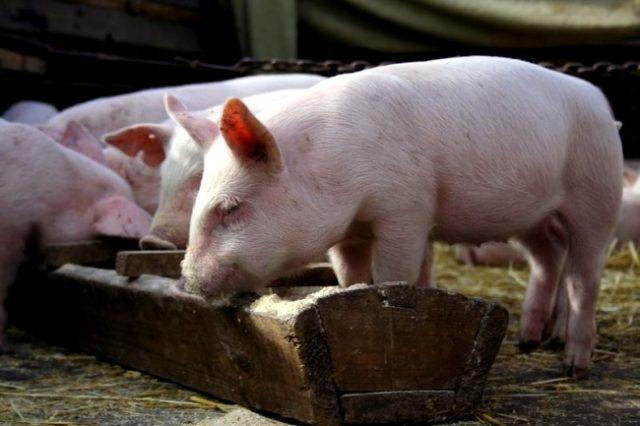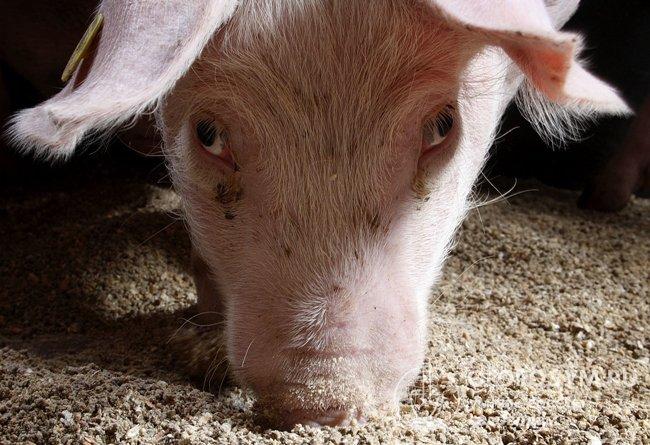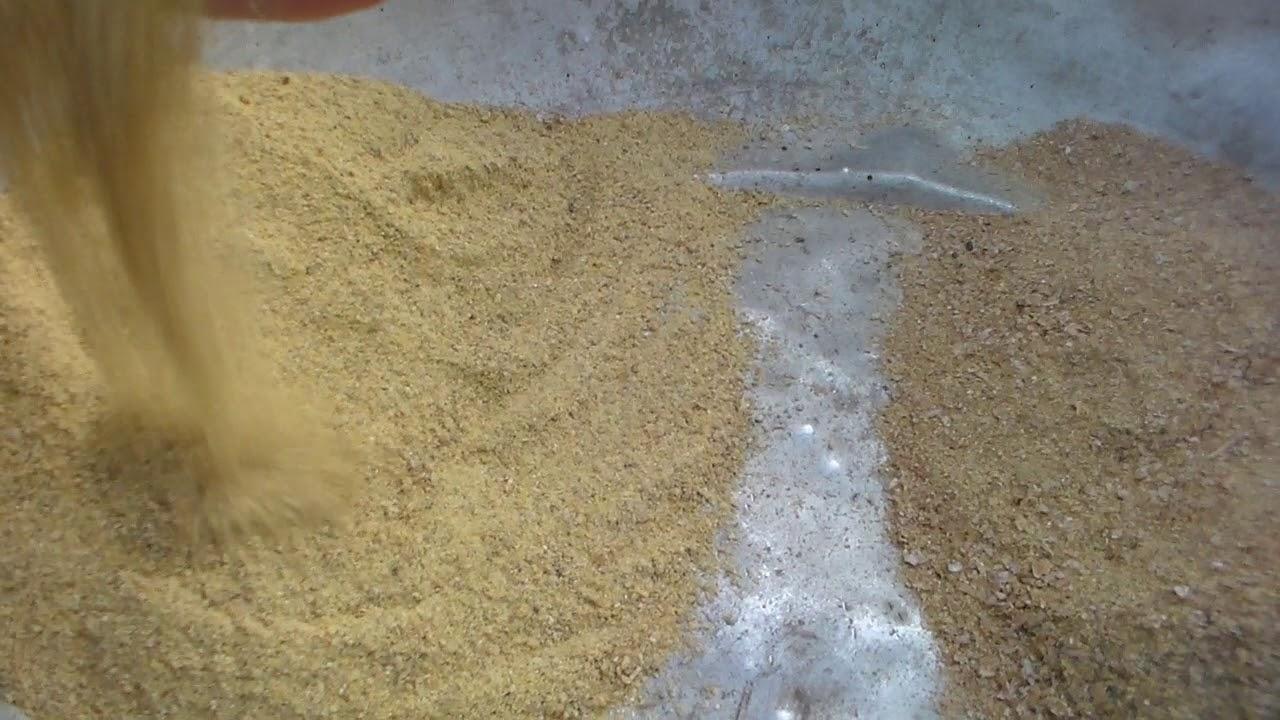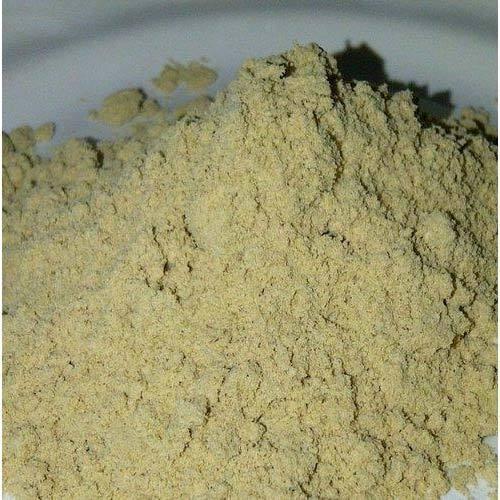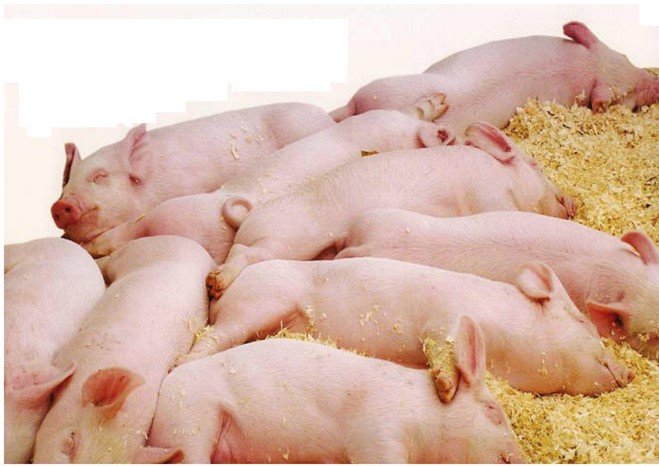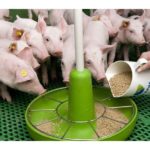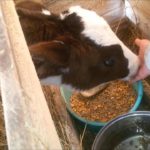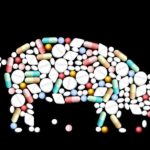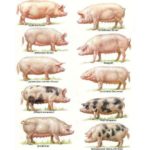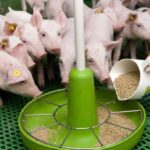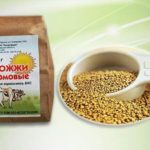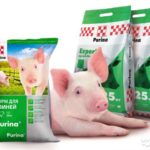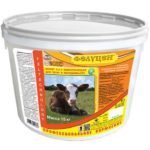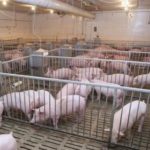The inclusion of feed additives for pigs stimulates growth. With a balanced diet and good housing conditions, it increases daily growth by up to 4%, increases feed consumption by 0.2-1.4%, improves conversion (the ratio of the weight of consumed feed to the weight of the finished product) to the established norm of 2.5-3.9% .
What are feed additives?
In pig farming, growth stimulants are included in the animal diet to quickly gain live weight.Their purpose: activation of protein synthesis, improvement of absorption of nutrients, breakdown of complex substances into an easily digestible form.
Categories of growth promoting feed additives for pigs:
- enzymatic;
- hormonal;
- dietary supplements and vitamin supplements;
- phosphatides;
- antibiotics (feed);
- probiotics.
Hormonal
Hormonal stimulants activate the endocrine system of pigs. Drugs (anabolic steroids) contain sex hormones and are released in the form of injections:
- Nandrolone, Laurabolin, Retabolil are administered intramuscularly;
- DES, Sinestrol ampoules are implanted under the skin in the area behind the ear, they dissolve within 6-9 months.
Hormone injections are given once every 2-3 weeks.
Enzymatic
The purpose of enzyme feed additives for pigs is to improve digestion, activate feed digestion processes in order to maximize the absorption of nutritional components. Enzyme extracts are produced from the entrails of adult pigs. Use the liver, spleen, kidneys. The stimulator is injected under the skin in the form of a solution once every 10 days. The additive Nucleopeptide is popular among pig farmers.
The drug begins to be administered subcutaneously from one month of age and ends 10 days before slaughter.
Feed antibiotics
Antibiotics suppress the growth of pathogenic intestinal microflora and strengthen the immune system. The pigs’ body does not waste energy fighting infections, so they actively gain muscle mass. According to statistics, taking the drugs Cormarin, Tetracycline, Vitamycin, Biovit-40, Cormogrisin gives weight gain of up to 15-20%.
Phosphatides
Phosphatides contain fatty acids, polyhydric alcohols, phosphoric acid, substances that improve protein metabolism and nutrient digestibility. Phosphatides are obtained from vegetable oils by extraction and are produced in the form of a viscous, brown emulsion.When serving, it is diluted with water and added to the young animals’ drinking bowls.
Vitamin supplements and dietary supplements
These groups of growth stimulants are used by farmers, industrial enterprises, and homestead owners. The components contained in the supplements promote rapid tissue formation. Dietary additives increase the nutritional value of basic feed and improve their digestibility. This type of additive is presented on the market:
- premixes;
- BMWD - protein-mineral vitamin supplements;
- natural acids.
BMVD and premixes are not complete feeds. They are mixed into feed. The percentage of premixes in the diet is 1-5%, BMVD - 10-30%. Natural acids - succinic, glutamic, citric, also stimulate growth. They are given in the form of an aqueous solution with food. The dose is calculated based on the weight of the animal.
Vitamin complexes are presented in tablets, powders, solutions for injections (intramuscular, subcutaneous). They are prescribed to animals if there are no BMVD in the diet. Useful elements are found in substances of organic and mineral origin.
| Element | Additive |
| Phosphorus | Ash, meat and bone meal, bone meal |
| Vitamins | Feed yeast, Azobacterin |
| Calcium | Feed chalk, ash, meat and bone meal |
| Sodium | Table salt |
Probiotics
The preparations contain: microorganisms that have a good effect on the intestinal microflora, bacteriocins that promote the rapid adaptation of beneficial bacteria, metabolites - waste products of beneficial microorganisms (microelements, vitamins, amino acids).
Advantages and disadvantages of use
The introduction of growth stimulants into the diet has pros and cons. The advantages of feed additives include:
- accelerated weight gain;
- reducing the proportion of fat;
- improving the taste of meat;
- reducing maintenance costs by increasing the nutritional value of feed;
- reduction of morbidity due to increased immunity;
- reduction of mortality of young animals.
In order for the use of stimulants to bring the declared effect, constant dosage control is required. The rates and period of use of feed additives depend on the age and weight of the pigs. Failure to comply with them may harm the health of animals. The peculiarities of using growth stimulants complicate care and take more time.
Selection rules
There are a number of characteristics that are evaluated when choosing growth stimulants. First of all, additives must be economically beneficial and non-toxic. Secondly, when included in the diet, they should not:
- cause side effects;
- influence negatively the intestinal microflora;
- promote the development of pathogenic microflora;
- accumulate in muscles and intestinal tissues;
- pollute the environment;
- reduce the therapeutic effect of drugs.
Detailed information about the product (all components, date of manufacture, expiration date, requirements for storage conditions) must be on the packaging. The product must meet the requirements of GOST and have a certificate of conformity.
Features of the use of growth stimulants
Premixes are added to piglets’ feed if pathologies of development, growth, rickets, dermatitis, abnormalities in the functioning of muscles or the nervous system are detected. The mixture supplies animals with important vitamins:
- C improves the functioning of the reproductive system.
- B6, B12 relieve cramps, dermatitis, vitamin deficiencies, and normalize metabolism.
- A, E, D3 affect the development of bone and muscle tissue, growth, and eliminate the symptoms of rickets.
When growth stimulants are used, fattening pigs quickly gain weight. Vitamins are needed in the feed.They strengthen the skeleton, the load on which increases along with the growth of muscle mass.
When introducing several types of additives into the diet, their compatibility is taken into account. Incorrectly selected combinations of stimulants (feed antibiotics, premixes, vitamins) can provoke allergies and diarrhea. The dosage of all drugs is calculated depending on age, weight, and breed.

